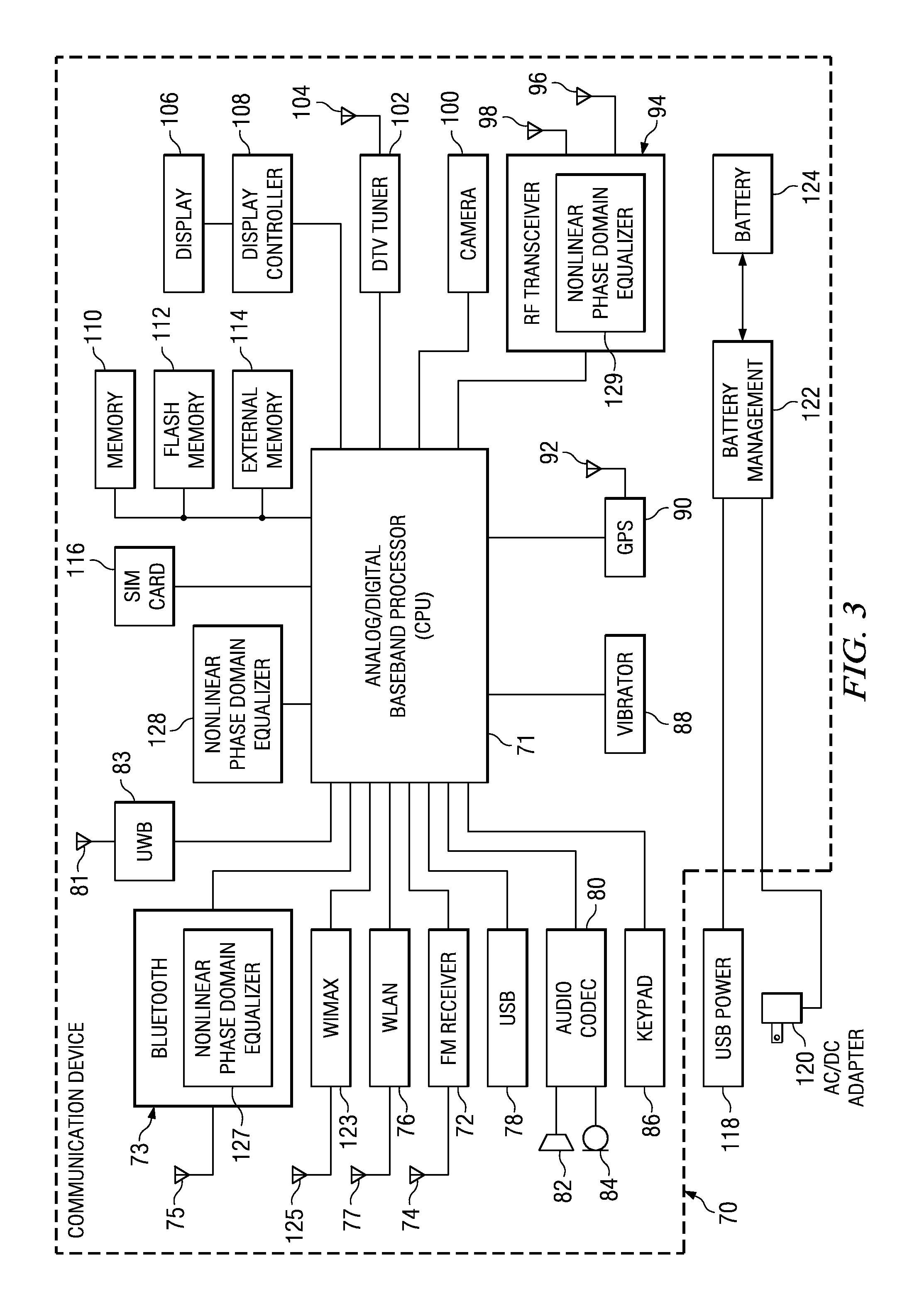Nonlinear adaptive phase domain equalization for multilevel phase coded demodulators
a phase domain equalization and adaptive phase technology, applied in the field of data communication, can solve the problems of reducing the sensitivity of the receiver, reducing the complexity of the filter, and reducing the noise of the isi, so as to improve the immunity of phase-modulated signals (psk), simplify the design of a digital receiver, and improve the isi performance
- Summary
- Abstract
- Description
- Claims
- Application Information
AI Technical Summary
Benefits of technology
Problems solved by technology
Method used
Image
Examples
Embodiment Construction
Notation Used Throughout
[0044]The following notation is used throughout this document.
TermDefinitionACAlternating CurrentADCAnalog to Digital ConverterAFCAutomatic Frequency ControlASICApplication Specific Integrated CircuitAVIAudio Video InterleaveAWGNAdditive White Gaussian NoiseBMPWindows BitmapC / ICarrier to Interferer RatioCFOCarrier Frequency OffsetCPMContinuous Phase ModulationCPUCentral Processing UnitDACDigital to Analog ConverterDCDirect CurrentDEVMDifferential Error Vector MagnitudeDPSKDifferential Phase Shift KeyingDSLDigital Subscriber LineDSPDigital Signal ProcessorEDGEEnhanced Data Rates for GSM EvolutionEDREnhanced Data RateEPROMErasable Programmable Read Only MemoryEVMError Vector MagnitudeFIRFinite Impulse FilterFMFrequency ModulationFPGAField Programmable Gate ArrayGMSKGaussian Minimum Shift KeyingGPSGlobal Positioning SystemGSMGlobal System for Mobile communicationsHDLHardware Description LanguageICIntegrated CircuitIEEEInstitute of Electrical and Electronics Engi...
PUM
 Login to View More
Login to View More Abstract
Description
Claims
Application Information
 Login to View More
Login to View More - R&D
- Intellectual Property
- Life Sciences
- Materials
- Tech Scout
- Unparalleled Data Quality
- Higher Quality Content
- 60% Fewer Hallucinations
Browse by: Latest US Patents, China's latest patents, Technical Efficacy Thesaurus, Application Domain, Technology Topic, Popular Technical Reports.
© 2025 PatSnap. All rights reserved.Legal|Privacy policy|Modern Slavery Act Transparency Statement|Sitemap|About US| Contact US: help@patsnap.com



